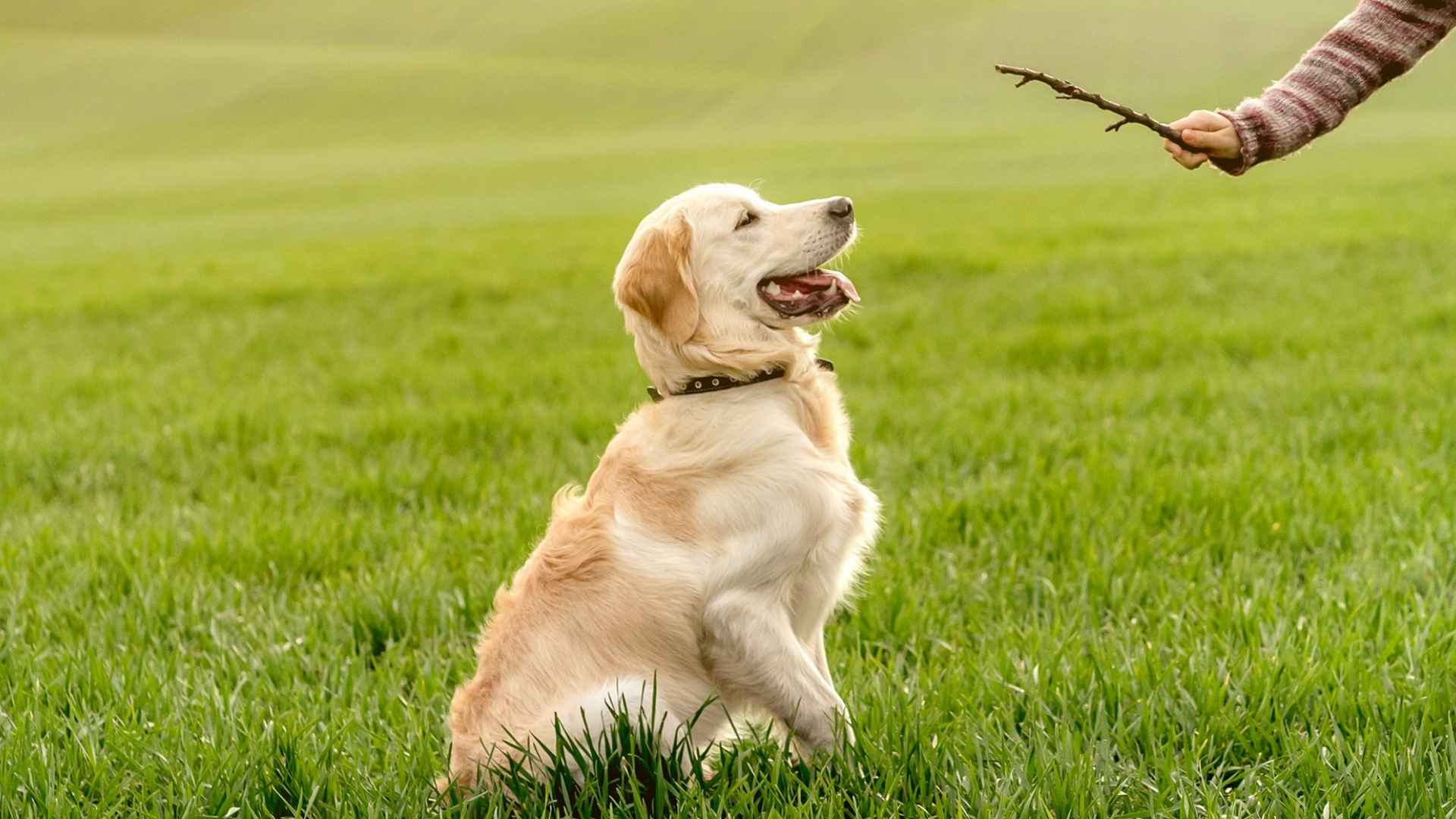Ever wondered what it would be like to have a dog that practically reads your mind? Some pups are more than just adorable—they’re downright brilliant. The smartest dog breeds are quick learners, masters of obedience, and can pick up new commands faster than you can say “treat.”
Whether they’re helping on a farm, leading the blind, sniffing out danger, or just impressing guests with their bag of tricks, these canine intellectuals thrive when their minds are challenged.
Let’s dive into the brainiest dog breeds in the world—those that consistently score high in trainability, memory, problem-solving, and adaptability. But intelligence isn’t just about following commands; it’s also about how well dogs read human emotions, solve puzzles, and navigate their environment.
If you’re looking for a dog that can keep up with your wit—or maybe outsmart you—this list is a great place to start. From herding breeds that strategize on the fly to those that could pass for furry professors, let’s meet the dogs who top the charts in canine IQ. You might be surprised who makes the cut!
Smartest Dog Breeds Ranked
1. Border Collie
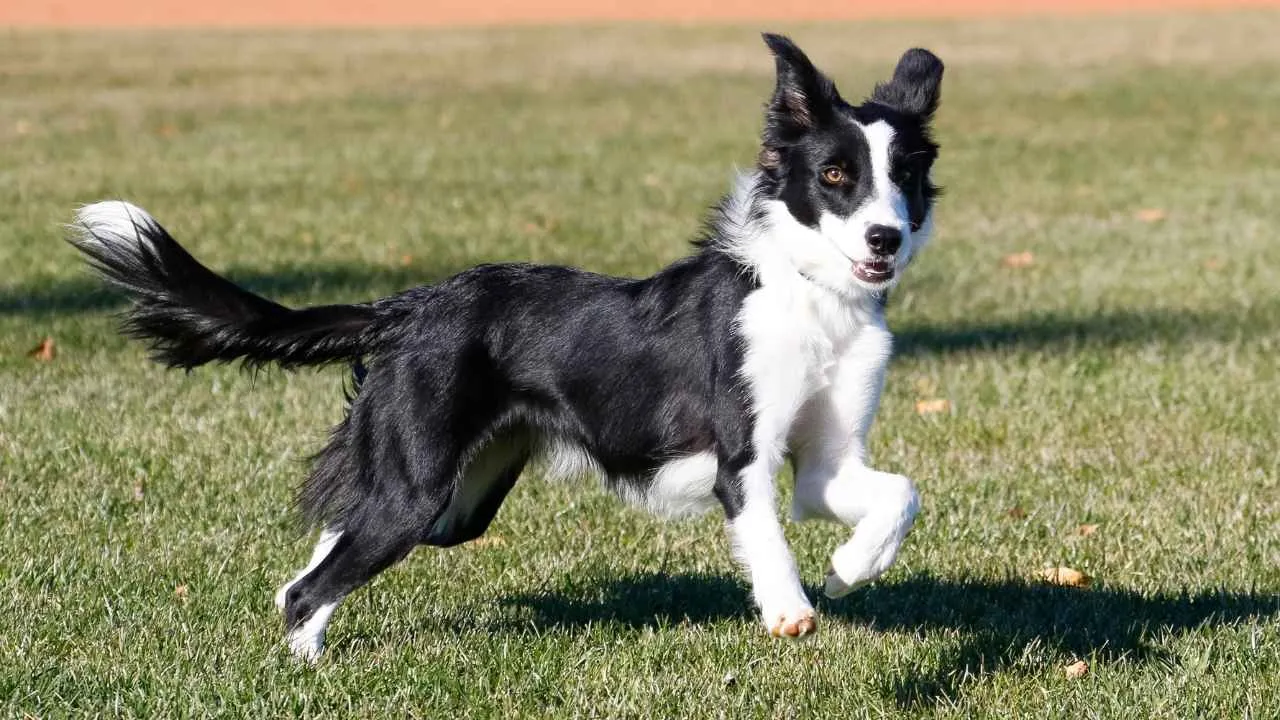
Intelligence Level: Literally Einstein with Fur
If dogs had Ivy League schools, the Border Collie would be the valedictorian and the professor. Hailing from herding fields in the UK, this intelligent breed doesn’t just follow commands — they anticipate them.
They can learn a new command in under 5 repetitions, and obey it 95% of the time or better. That’s faster than most humans learning how to set up a new Wi-Fi router.
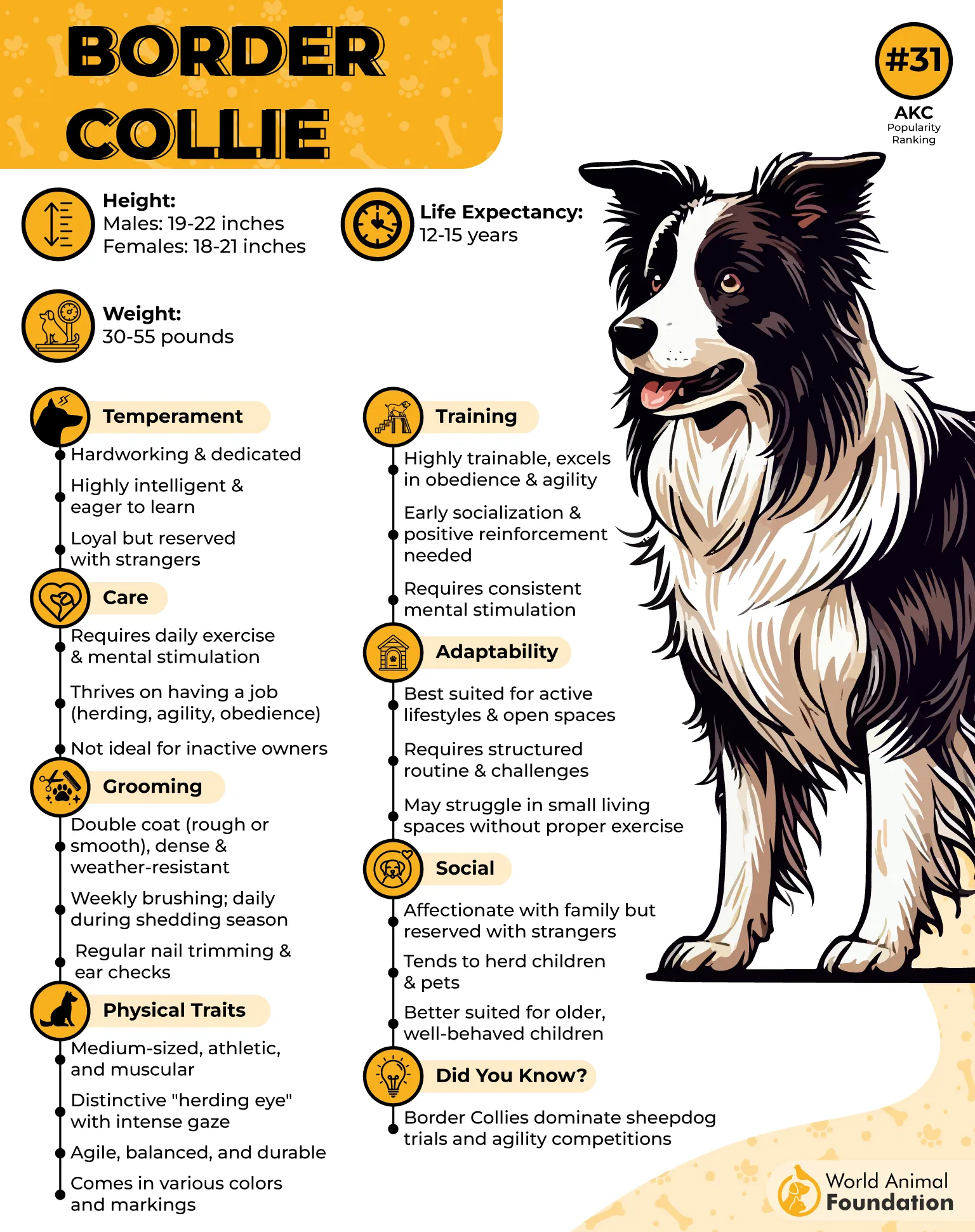
Border Collies thrive on mental stimulation. Boredom? Not in their vocabulary. These herding dogs are often seen herding sheep, children, ducks, and sometimes even their toys into neat little circles — it’s in their DNA.
They’re not ideal for couch potato owners, unless you want your living room rearranged by a dog who thinks they’re on an episode of Extreme Makeover: Canine Edition.
Border Collies require plenty of physical exercise and mental challenges. Without enough stimulation, they may become bored and exhibit destructive behaviors.
Border Collies can get bored or anxious if left alone for extended periods. Establishing a consistent routine filled with plenty of activities and mental stimulation can help reduce their anxiety and keep them happy.
Fun Fact: One Border Collie named Chaser knew over 1,000 words. That’s more than some toddlers… and possibly your roommate.
2. Poodle
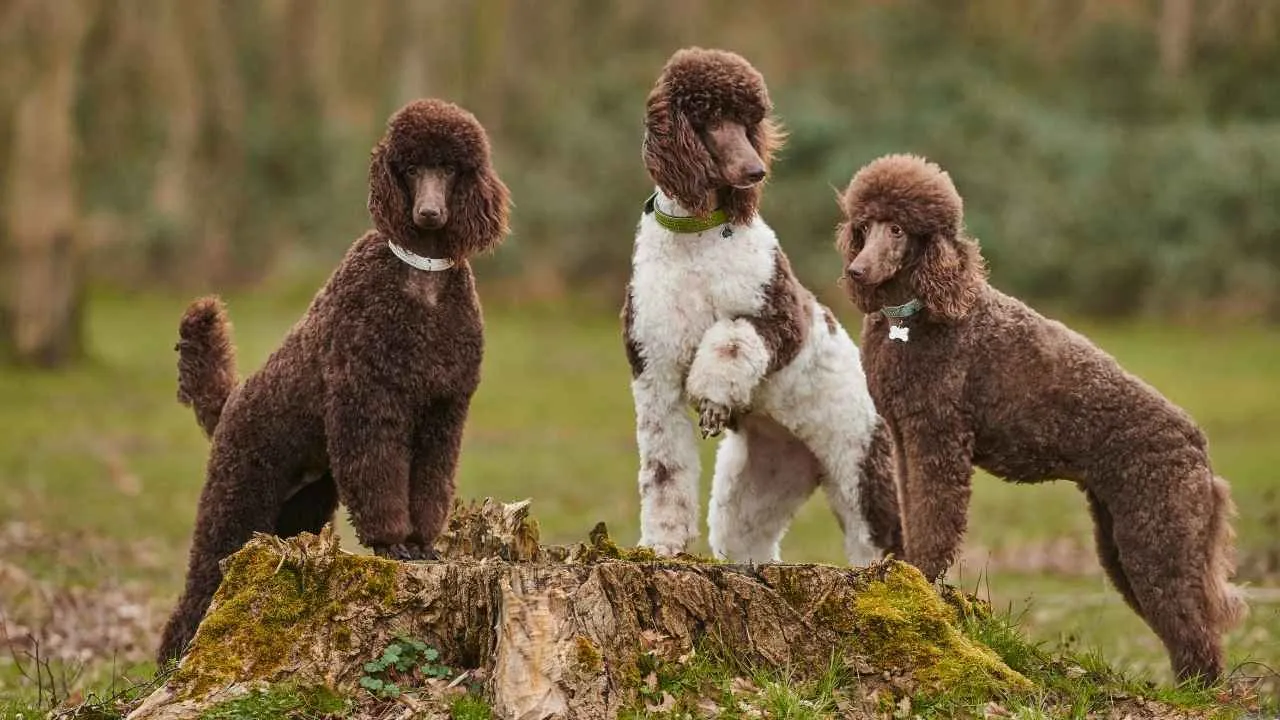
Intelligence Level: Brains in a Fluffy Package
Don’t let the fancy haircut fool you — Poodles are not just all fluff and no substance. Behind those well-groomed curls is one of the smartest breeds with the brains of a chess master and the agility of an Olympic gymnast.
Standard, Miniature, or Toy — the size may vary, but the IQ doesn’t. Poodles are problem-solvers who excel in obedience, learning new commands with lightning speed. Some owners swear their Poodles have figured out how to open doors, solve puzzles, and judge their fashion choices (okay, maybe not the last one — but we wouldn’t be surprised).
Poodles generally get along well with children, especially when they have enough ways to burn off their energy. However, their high energy levels and size can sometimes be overwhelming for small kids, and they might accidentally knock them over while playing.
However, if Poodles don’t get enough physical activity and mental engagement, they can become restless or agitated. It’s important to provide them with at least 60 minutes of exercise daily to keep them balanced and happy.
Purina says that Poodles have a low-shedding coat. However, their hair continuously grows, so they require regular trims and daily brushing to keep their coat healthy.
The Poodle is highly eager to please and quick to learn, making them very easy to train. Their strong trainability is showcased by their history of performing in circuses and on stage. Most Poodles catch on quickly to basic obedience commands.
Fun Fact: Poodles were originally bred as water retrievers. Their intelligence and swimming skills made them the Michael Phelps of the dog world, only fluffier and without the gold medals.
3. German Shepherd
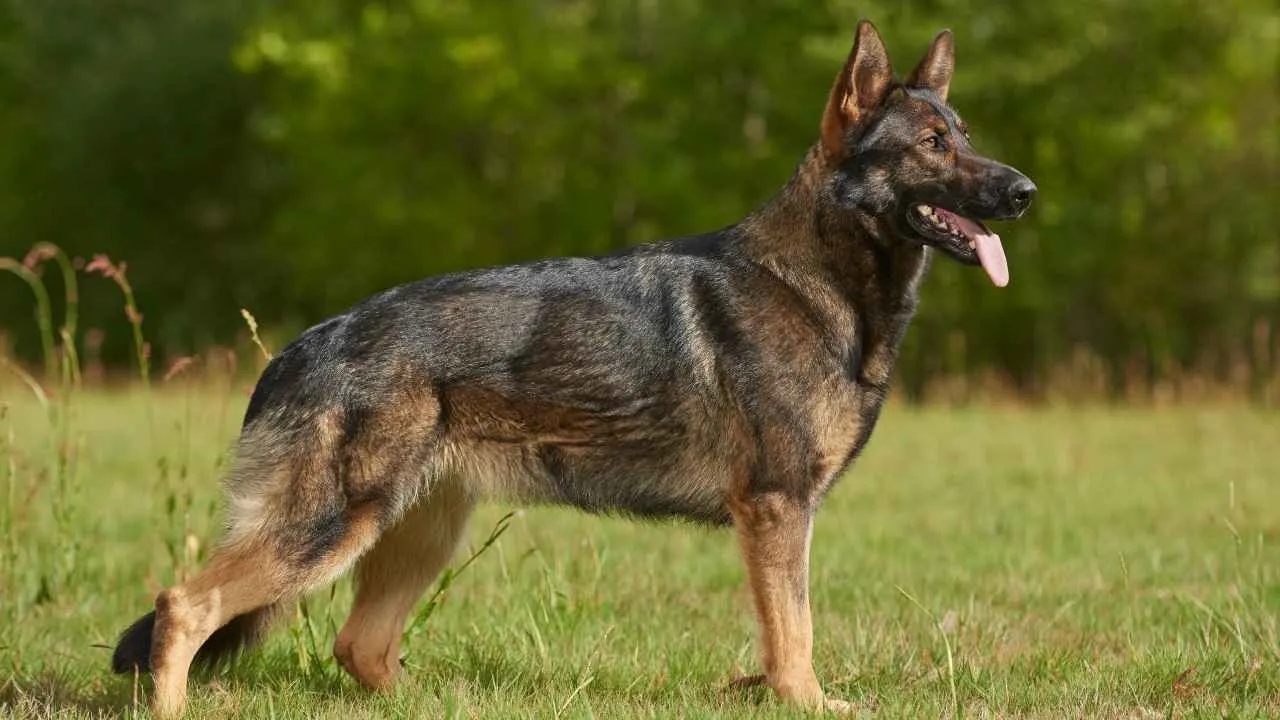
Intelligence Level: The Canine CEO of Common Sense
If loyalty, brains, and bravery had a baby, it would be a German Shepherd. These dogs are the multitaskers of the dog world, equally at home chasing down criminals, guiding the visually impaired, or playing fetch like a boss.
They can learn a new command in under 5–10 repetitions and obey with 90–95% accuracy. Not bad for a dog that’s a four-legged action hero.
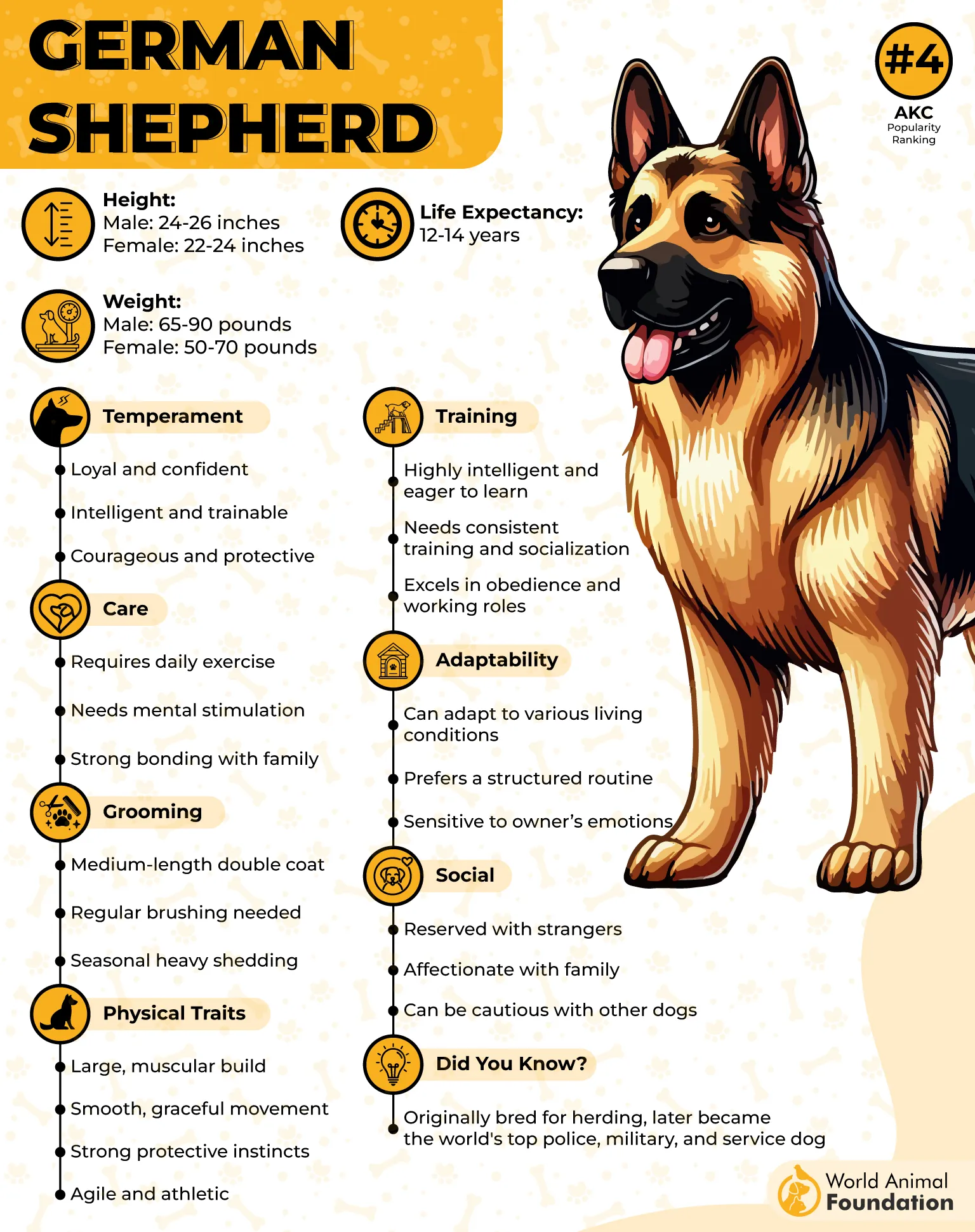
German Shepherds are so smart that they’re often used in police and military work. They’ll sniff out danger, track a suspect, and then go home and cuddle like nothing happened. If Border Collies are the nerdy honor students, German Shepherds are the tactical geniuses with a black belt and a heart of gold.
German Shepherds can become overprotective of their family and territory, especially if they aren’t properly socialized.
As per Wikipedia, they tend to be cautious around strangers and don’t usually warm up right away. Known for their intelligence and obedience, German Shepherds are also fiercely protective of their owners.
Fun Fact: They’ve been known to open gates, detect emotions, and even herd toddlers away from danger — truly the guardians of both hearth and heart.
4. Golden Retriever

Intelligence Level: The Sweet Genius in a Fluffy Suit
The Golden Retriever is like the golden retriever of people: smart, friendly, eager to please, and always ready for a snack. Don’t let their laid-back, happy-go-lucky vibe fool you — these friendly dogs are secretly brilliant.
Golden Retrievers are medium-sized canines, typically weighing between 55 and 75 pounds. They’re easily identified by their sturdy, muscular build, broad head, short ears, and deep, well-developed chest.
They learn commands quickly (usually within 5–15 repetitions) and obey about 85% of the time — unless there’s a squirrel involved. In that case, well… all bets are off.
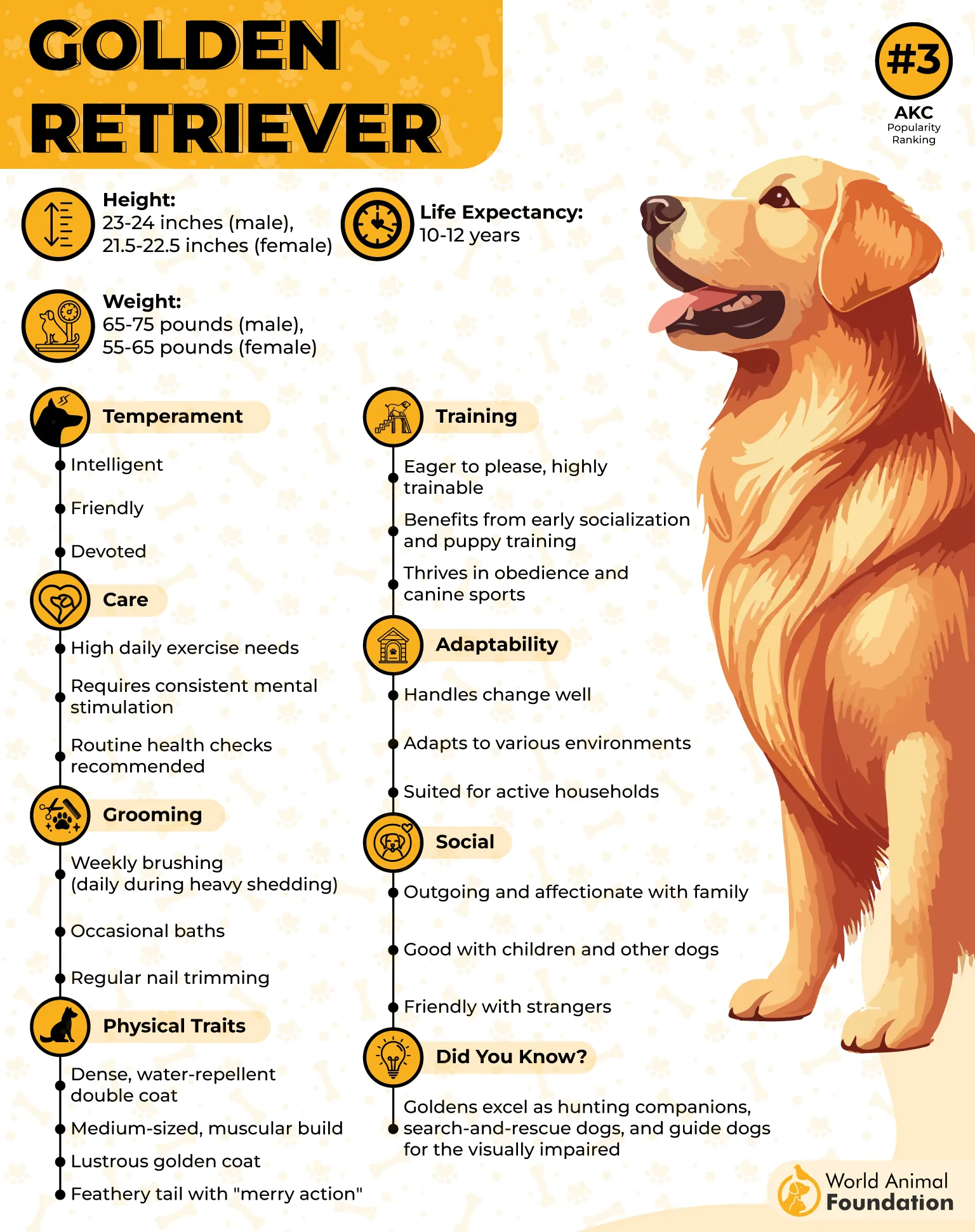
These bright dogs have a dense double coat that causes them to shed heavily. They are also prone to developing mats behind their ears and on their hind legs, which means they need regular grooming—either at home or by a professional—to keep their coat healthy.
Despite their moderate energy levels, even as they age, Goldens enjoy activities like running, long walks, retrieving, and swimming.
Golden Retrievers are often therapy dogs for a reason: they understand humans better than most humans do. Their empathy, problem-solving ability, and emotional intelligence are off the charts. If they had thumbs, they’d probably be running group therapy sessions.
Golden Retrievers are generally easy to train thanks to their gentle nature and strong desire to please. This makes them an excellent choice for first-time dog owners. When training, it’s best to use positive reinforcement techniques to encourage good behavior and build a strong bond with your dog.
Fun Fact: A Golden Retriever once returned a dropped wallet to its owner, without chewing it. That’s elite-level discipline and intelligence.
5. Doberman Pinscher

Intelligence Level: Brains + Brawn = Superdog
The Doberman is like a sleek, muscle-bound secret agent who also aced their SATs. Fast, fearless, and frighteningly smart, Dobermans can learn new commands in 5–15 repetitions and follow them with 85–90% accuracy — unless they’ve decided to test your leadership credentials.
Often used in protection work, they’re not just about intimidation — these dogs analyze situations like canine Sherlock Holmes. They’re loyal, alert, and tuned into your body language more closely than your nosy neighbor.
The Doberman is a loyal and intelligent dog breed, recognized for its alertness. While they make excellent family pets, Dobermans are also widely used in security roles, police work, and search and rescue operations.
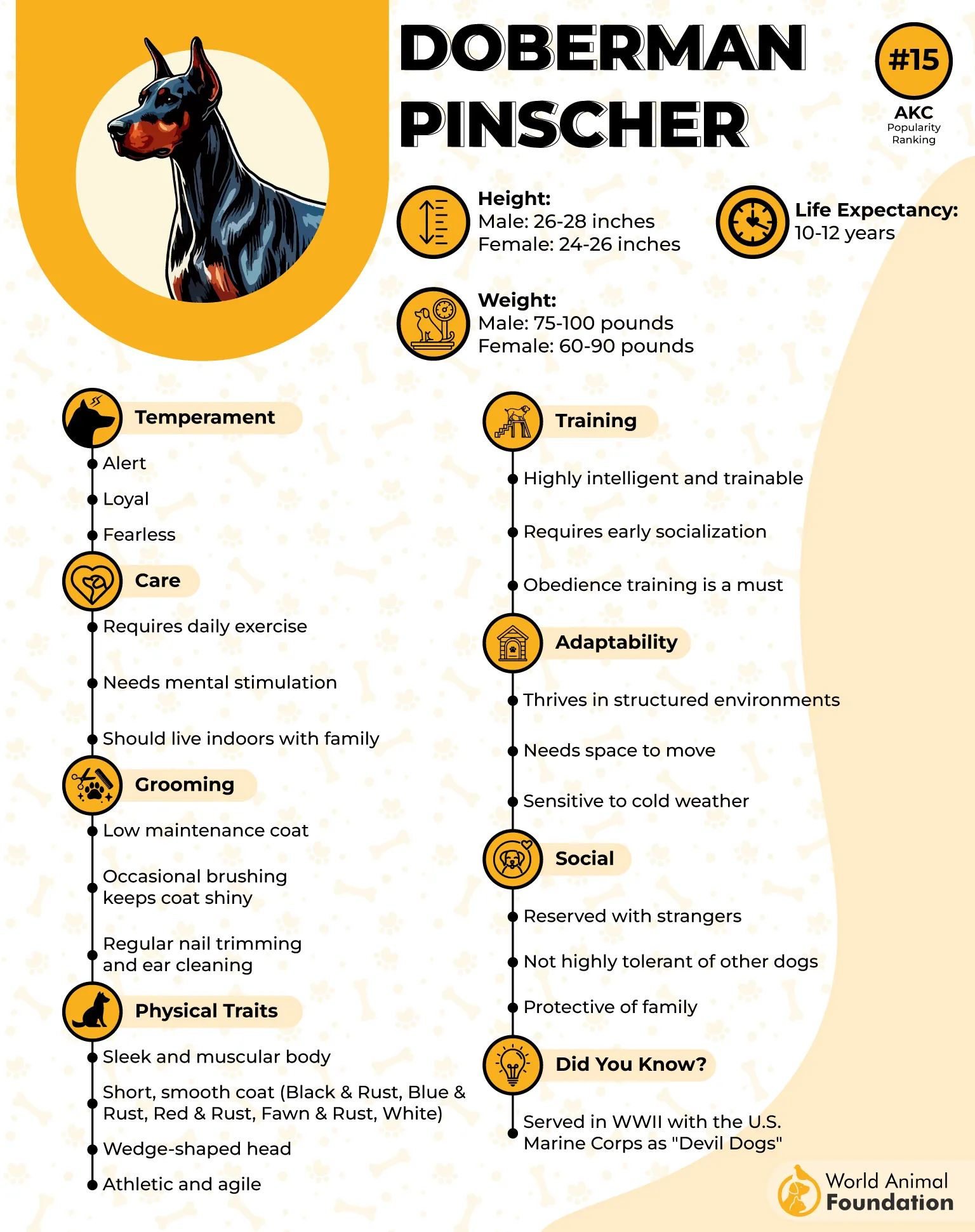
But don’t worry — under that “don’t mess with me” exterior is a total softie who just wants belly rubs and a job to do. Idle paws are the Doberman’s workshop… and possibly your living room remodel.
According to PetMD, Dobermans have a strong prey drive, which means they may not be the best choice for households with small pets like guinea pigs, rabbits, or cats.
Without regular exercise, Dobermans may find ways to stay busy, often resulting in destructive or undesirable behaviors. These energetic dogs might not be the best fit for families with very young children.
Fun Fact: The breed was originally developed by a tax collector — because let’s face it, you need a smart, intimidating dog if you’re knocking on doors asking for money.
6. Labrador Retriever

Intelligence Level: The Scholar of Snacks & Snuggles
Labs are America’s favorite dog — and for good reason. With an intelligence level of 80/100, they’re not only quick learners but phenomenal people-pleasers. They’ll obey with 80–90% consistency, especially if you’ve got treats. Or socks. Or… anything. Labs just love a good exchange.
They’re known as gun or hunting dogs because they were originally bred to retrieve game birds and animals shot by hunters, making them excellent hunting companions.
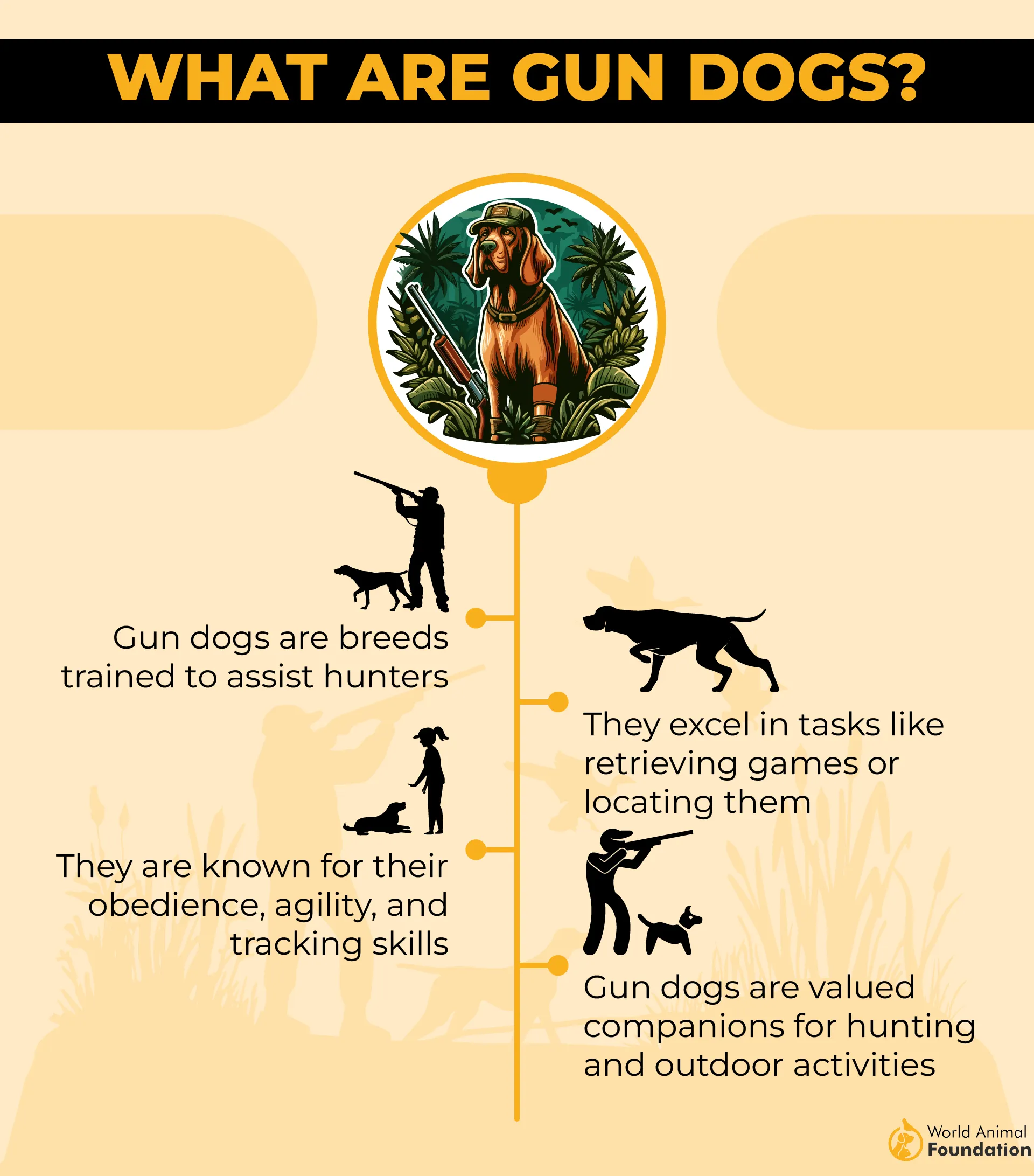
Labradors are medium to large-sized dogs, typically standing between 21.5 and 24.5 inches tall and weighing 55 to 80 pounds. They are one of the most popular dog breeds worldwide.
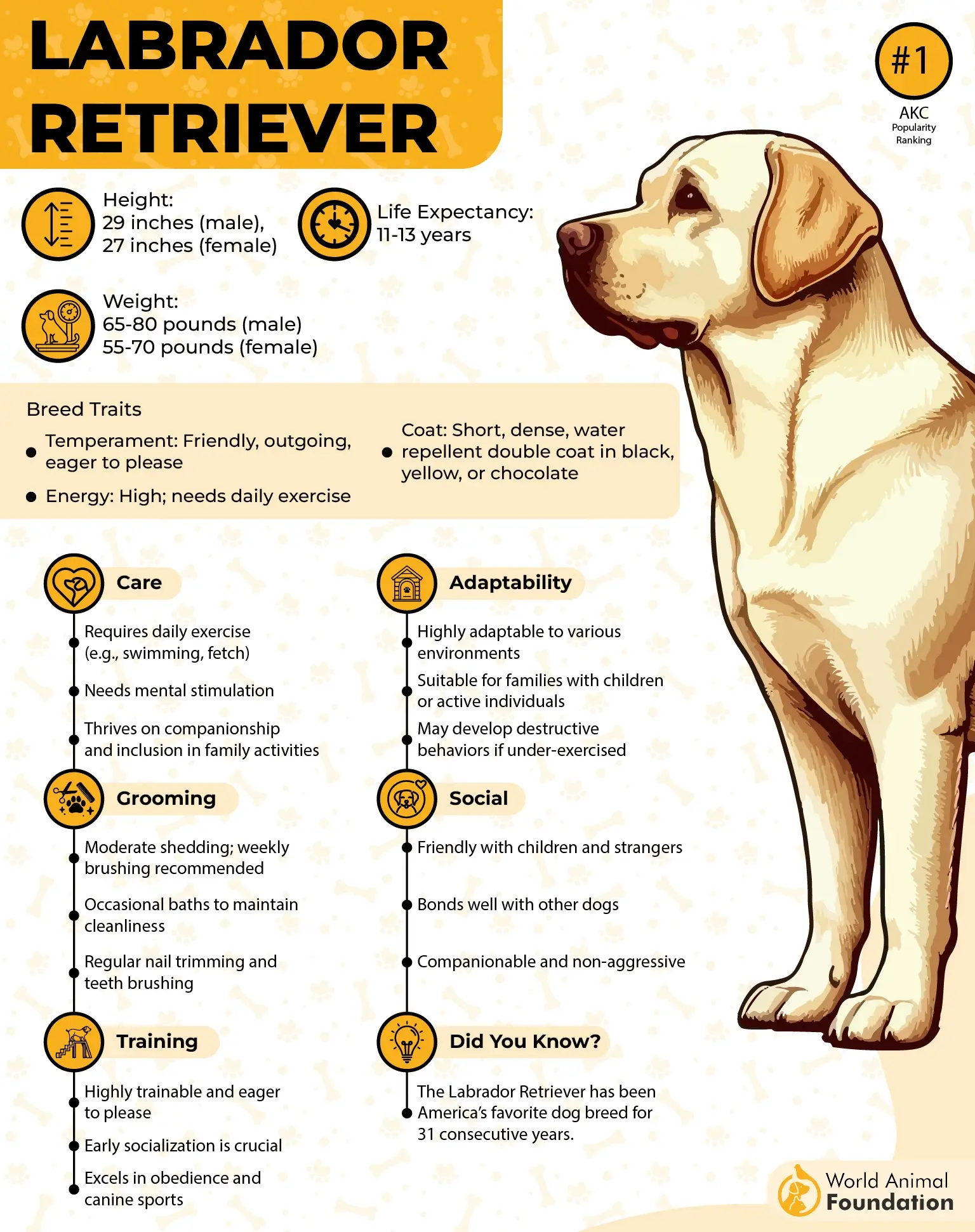
They’re the kings and queens of “emotional IQ” — used for service work, search and rescue, therapy, and making your day instantly better. Known for their friendly, outgoing personality and intelligence, Labs make excellent family pets, service dogs, and hunting companions.
WebMD says training Labrador Retrievers is straightforward. While they are naturally active and enjoy moving around, with proper training, they remain calm and obedient. Their strong hunting instinct drives their love for activity and exploration.
Their only weakness? A Labrador’s stomach is like a black hole. You may be teaching them to sit, but they’re figuring out how to steal your lunch from the counter in one smooth ninja move.
Labrador Retrievers are enthusiastic and have boundless energy, needing plenty of exercise and activity to stay both mentally and physically healthy. Without sufficient exercise, Labs can become hyperactive or develop destructive behaviors.

Fun Fact: Labs are so friendly and trustworthy, they’d probably help a burglar carry your TV if he gave them a biscuit.
7. Papillon

Intelligence Level: Small Dog, Big Brain, Zero Chill
Ah yes, the Papillon: proof that great things come in tiny, butterfly-eared packages. Don’t let the dainty frame fool you — this little dog could run mental laps around much larger breeds.
Papillons belong to the Toy breed group, known for their small size and affectionate nature, making them well-suited for companionship and indoor living.
Papillons learn commands lightning fast, obey with 85 %+ accuracy, and often outshine big dogs in agility and obedience competitions. They’re like the valedictorian who also captains the debate team and rides a scooter in heels.
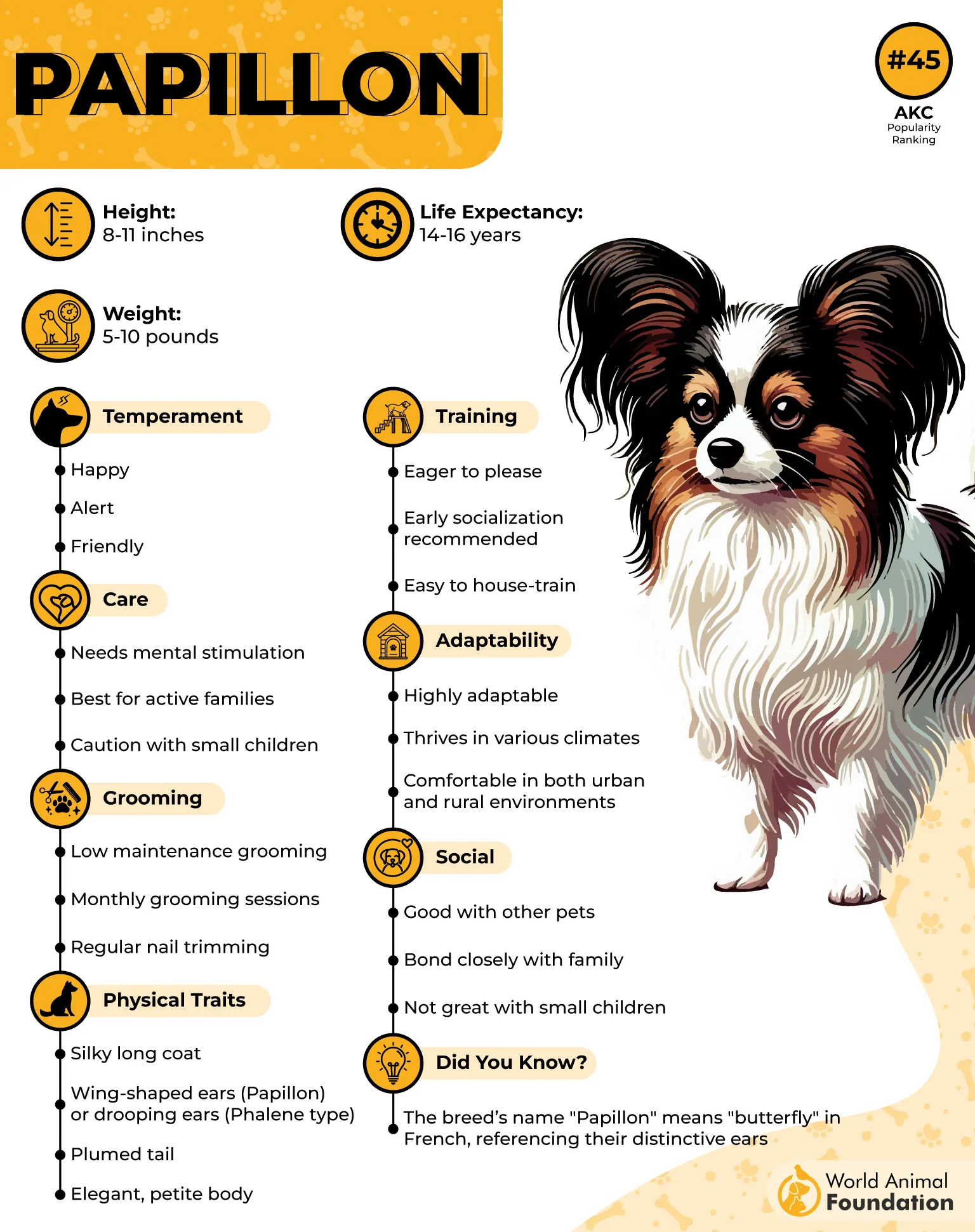
They’re also bold, spunky, and not afraid to tell off a Rottweiler three times their size. Papillons have zero idea they’re small, which makes them ten times more entertaining.
PDSA notes that Papillons are highly trainable and respond well to training. Early training and socialization are essential to help them develop into confident and well-adjusted dogs.
Fun Fact: “Papillon” means “butterfly” in French — named for those adorable ears that look like wings. But don’t be fooled — they may look cute, but they’re strategic satellite dishes, constantly scanning for chaos (or snack opportunities).
Conclusion
When it comes to ranking the smartest dog breeds, experts often evaluate based on the intelligence of dogs in three key areas: obedience training, problem solving, and adaptive intelligence. Obedience trial judges have long studied the dog’s ability to learn new tricks, respond to the first command, and perform specific tasks, especially those related to sheep herding, tracking skills, and other working roles. While classic working dogs like the Border Collie and Poodle often top intelligence rankings, other breeds such as the Australian Cattle Dog, Shetland Sheepdog, Miniature Schnauzer, Australian Shepherd, and Belgian Tervuren also demonstrate exceptional smarts.
The herding group, in particular, is filled with highly intelligent breeds with a strong natural instinct for leadership, coordination, and communication. Breeds like the Pembroke Welsh Corgi, Flat-Coated Retriever, Belgian Sheepdog, American Staffordshire Terrier, and English Springer Spaniel showcase a mix of brains, obedience, and drive to please their dog owners. In the end, while specific breeds may dominate the rankings, many different breeds bring unique strengths to the table—each shining in different ways depending on their roles, environments, and the love and guidance of their human companions.


